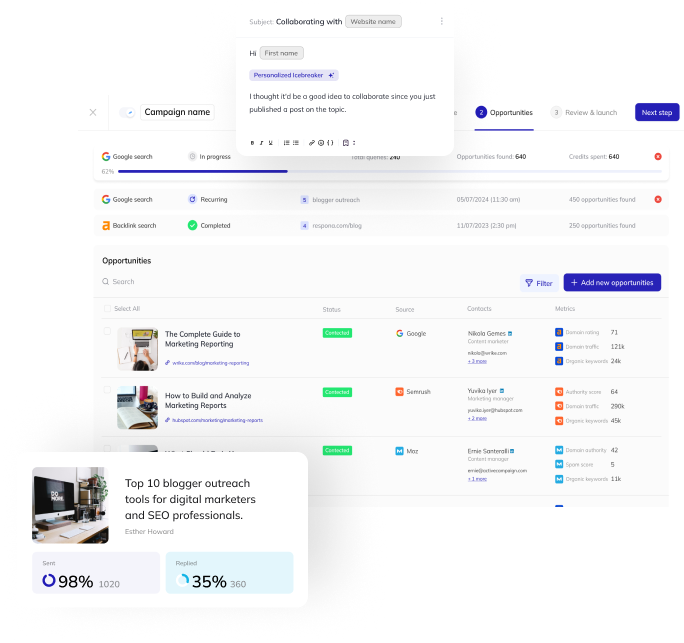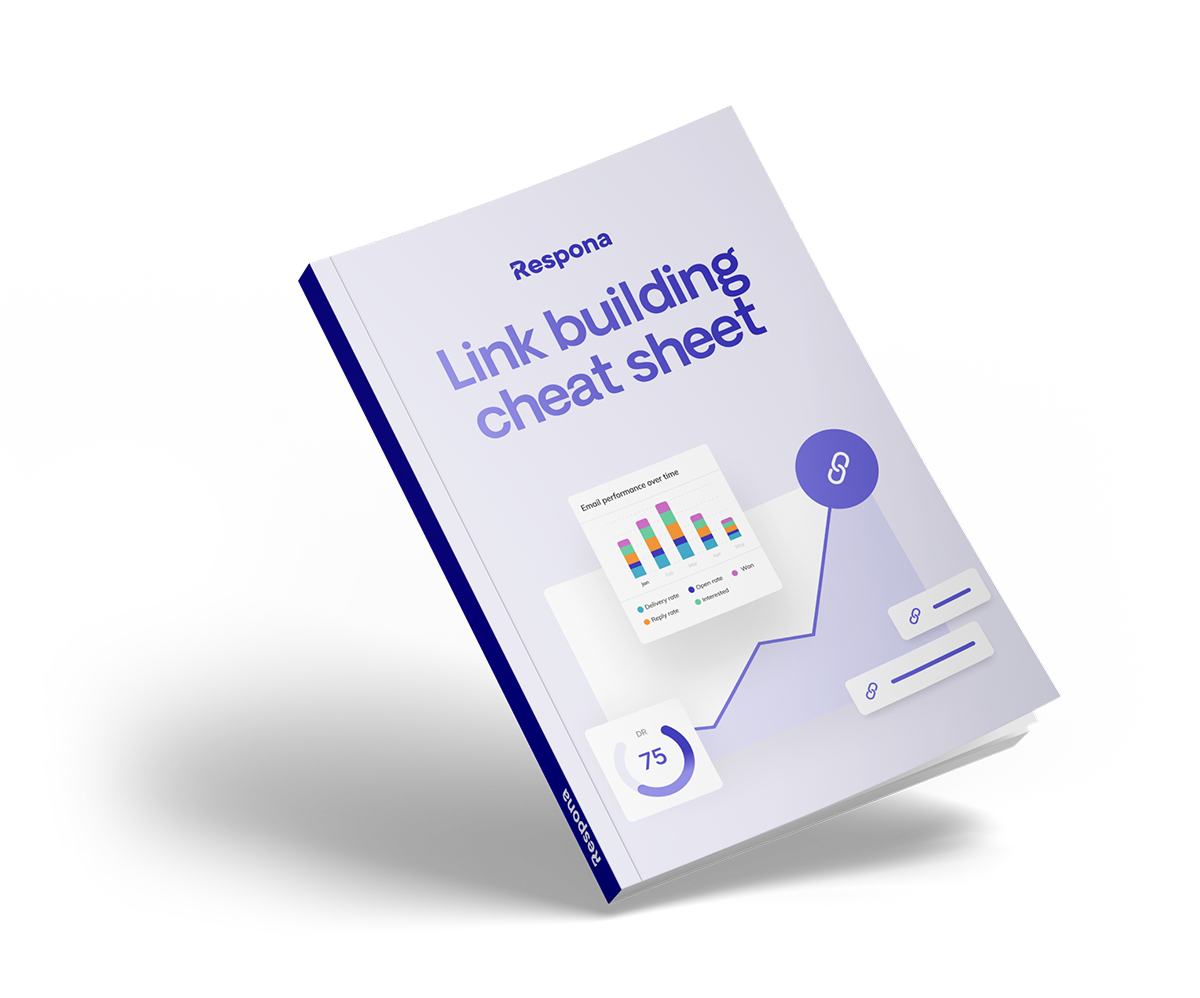According to PartnerStack, 70% of net new revenue from affiliate programs comes from partners sourced from outbound methods.
In other words, you need to invest time and effort into finding and recruiting affiliate partners to get better results.
But how do you find a new affiliate partner?
In this article, we will be discussing 7 of the most sure-fire ways to find affiliates for your program – no fluff.
Let’s get into it.
- What is Affiliate Marketing?
- Find Top 10/Product Review/Product Alternative Articles and Other Competitor Mentions
- How to Find Competitors’ Affiliate Links and Programs
- Build a Landing Page for Your Program
- Influencers and Social Media Personalities
- Turn Your Own Customers Into Affiliates
- Join Affiliate Networks
- Leverage Paid Ads
- Now Over to You
- Frequently Asked Questions (FAQ)
Link building cheat sheet
What is Affiliate Marketing?
Affiliate marketing is a popular and effective way for businesses to expand their reach and increase revenue without breaking the bank.
Not to be confused with referral marketing – although they do share similarities.
So, what is affiliate marketing exactly?
Let’s break it down.
Affiliate marketing is a performance-based marketing strategy where a business (the merchant) partners with individuals or companies (affiliates), to promote and sell the merchant’s products or services.
In return, affiliate marketers receive a commission for every sale, lead, or website visitor they bring in through their unique referral link.

Now, the benefits.
For merchants, an affiliate marketing strategy allows them to tap into a broader audience without necessarily investing in advertising or hiring more staff. However, you may still need an affiliate manager (or someone that can fill the affiliate management role).
The right affiliates, on the other hand, can generate income simply by recommending products they genuinely believe in.
So, a win-win.
Find Top 10/Product Review/Product Alternative Articles and Other Competitor Mentions
This seems like a very specific type of articles.
And there’s a simple reason for that – they are often filled with affiliate links.
Or, their publishers require a spot in your affiliate program to put you up on the list along with your competitors.
Just Google “any tool name”, “top 10 [purpose] software”, “[tool] alternative” and see for yourself.
For example, this Ahrefs review by Style Factory productions is literally the first result:

And the first thing you see after following the link is, you guessed it – an affiliate disclosure:

But, as you know, manually going through Google takes forever.
Respona can help you scale up the process with minimal time investment.
In fact, it has a dedicated campaign template for every type of these articles:
- Listicles
- Product reviews
- Product alternatives
- Other competitor mentions
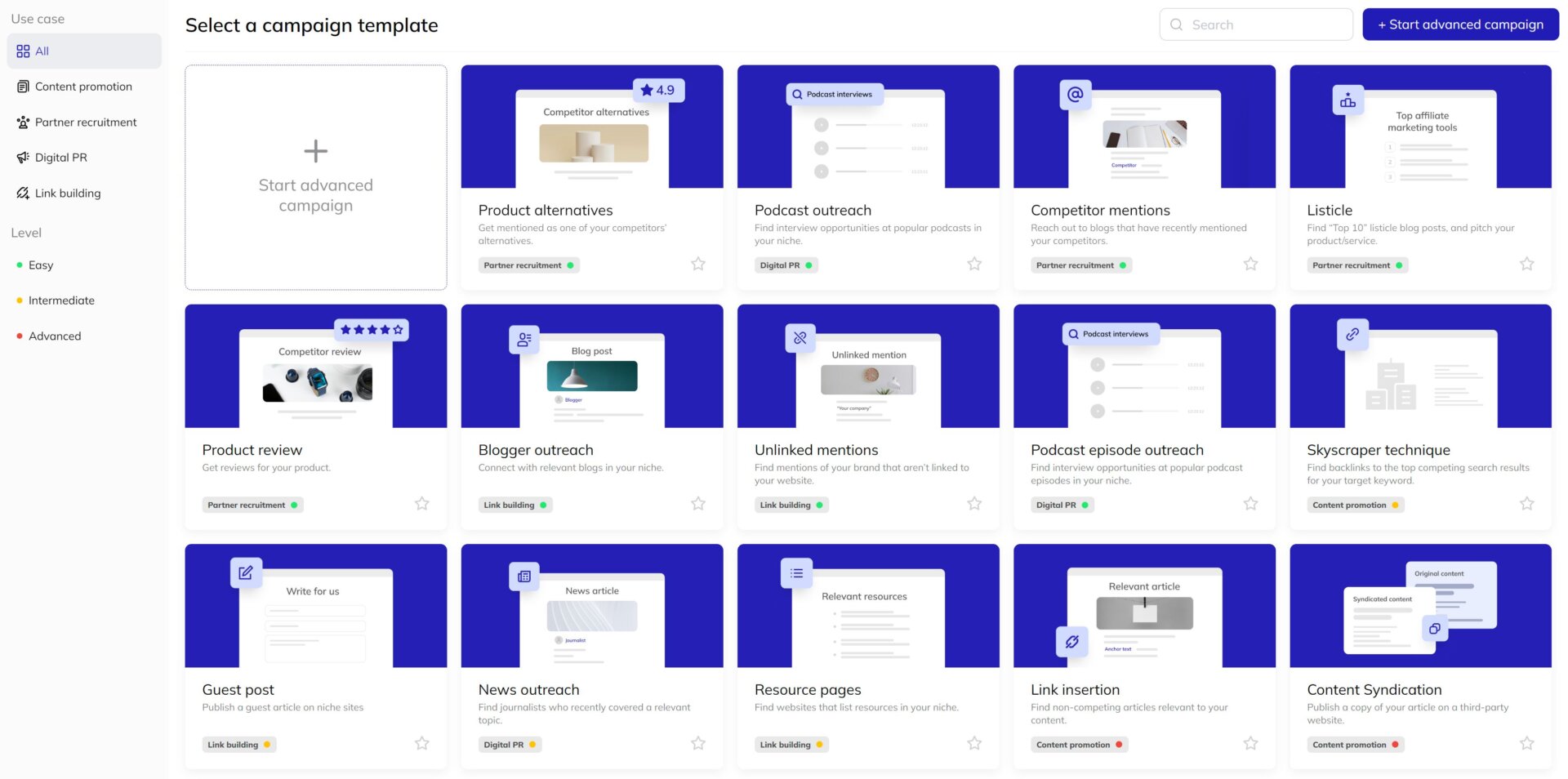
Using them speeds up the process in four ways:
- Sets up the search criteria for you
- Pre-configures your outreach template
- Automatically scrapes the web for relevant results
- Finds contact information of your potential affiliate partners
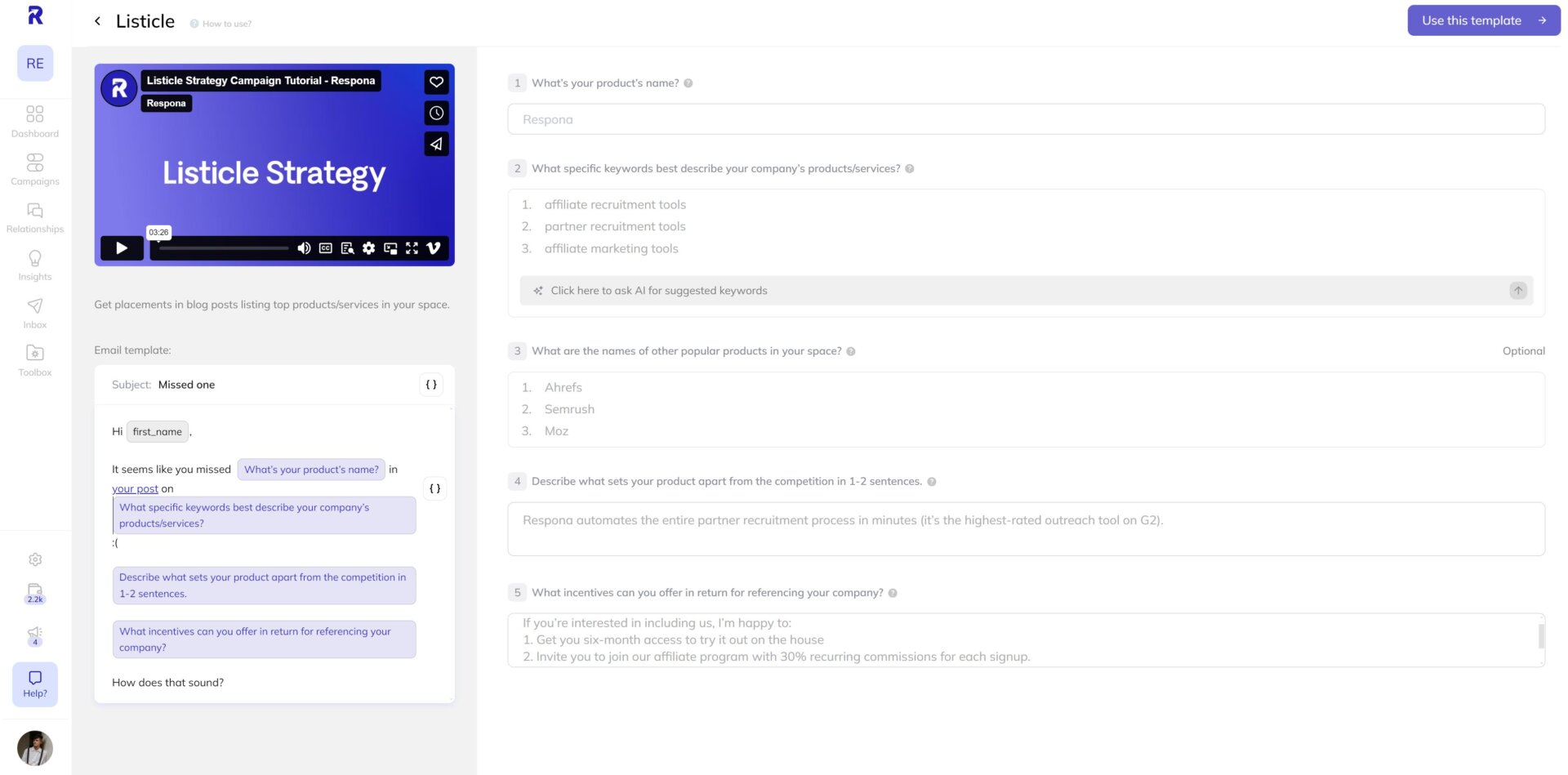
Simply fill out the required fields, and click “use this template”.
The first campaign step is to build your email outreach sequence – which is already done because we used an affiliate campaign template.
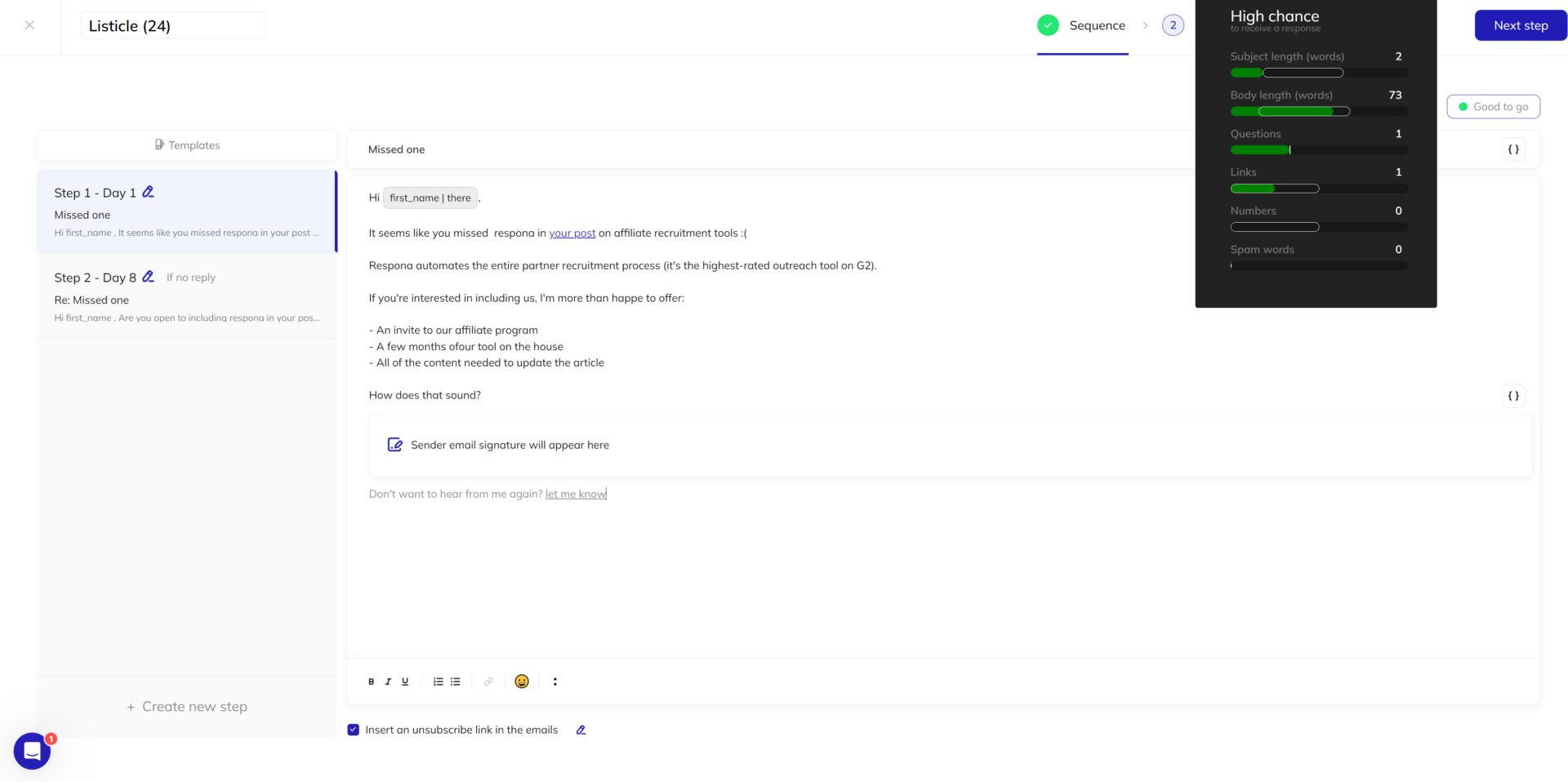
But let’s go an extra step further by adding an AI icebreaker variable.
In addition to “regular” varшables like first_name, the icebreaker will “read” your prospect’s content and come up with unique personalizations for every single opportunity in your affiliate marketing campaign.
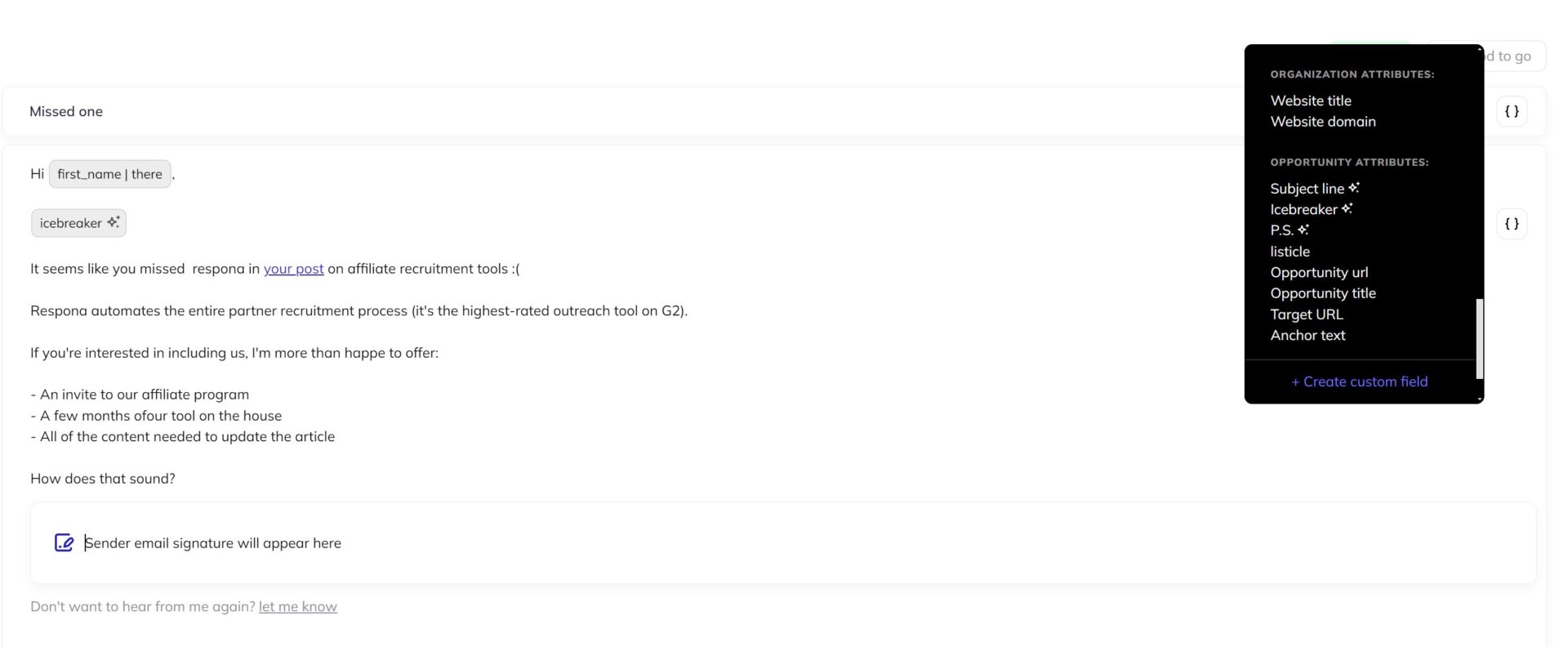
In the next step, we’ll also be giving the AI additional instructions.
The built-in email templates in Respona are all optimized for high chances of receiving a reply – but we still encourage you to experiment and come up with your own formats – and treat default temlplates as more of an inspiration.
Let’s move on to Step 2 – Opportunities.
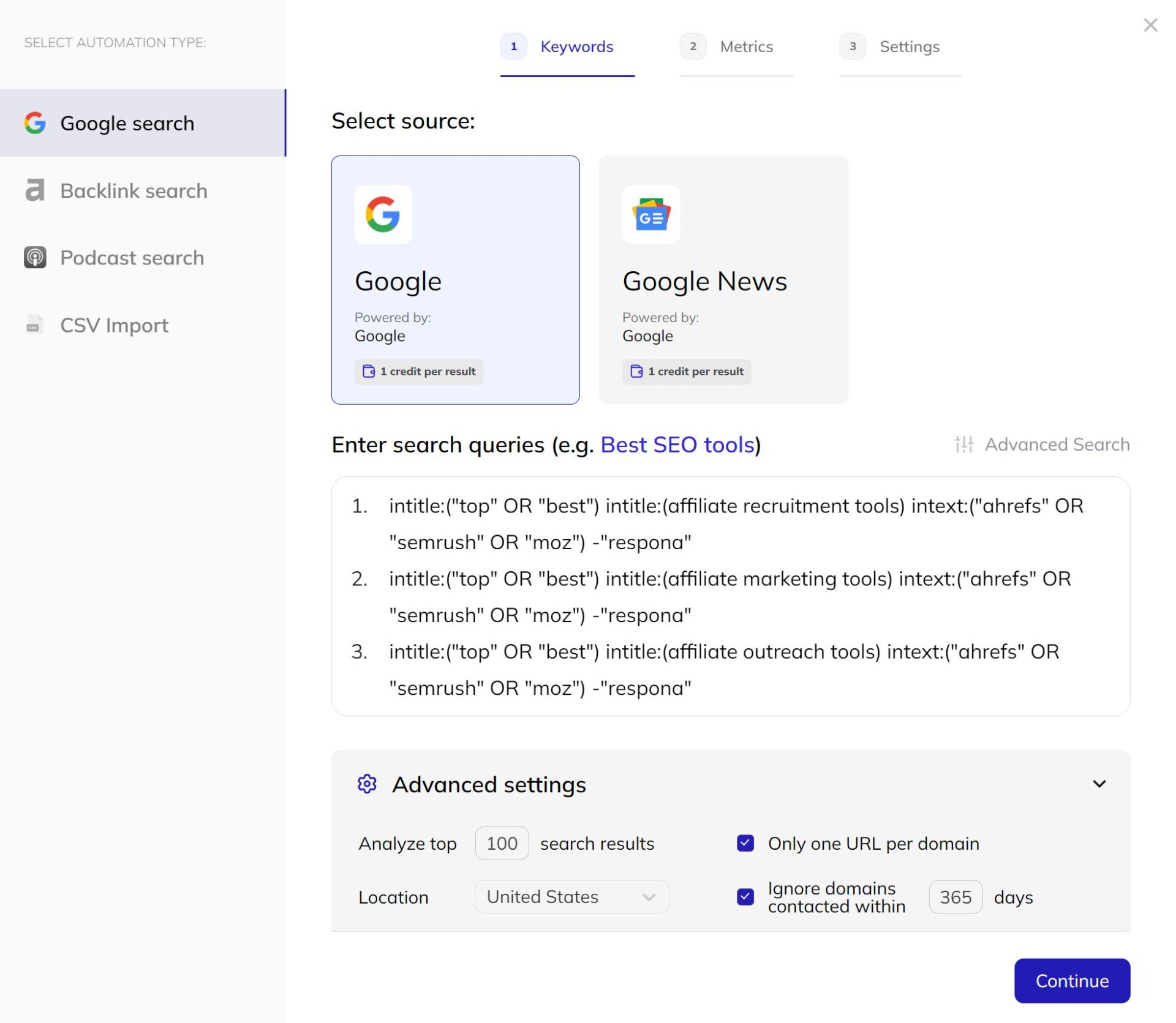
Here, Respona will find potential collaboration opportunities – as well as their contact information.
All of the search queries are already set up with advanced search operators based on our inputs on the template screen.
You can also hover your mouse over them and click on the preview icon to check out the search results before spending any credits on the search automation.
Click “Continue” and set some additional SEO filters to narrow the results down to only websites that would make sense for us to collaborate with.
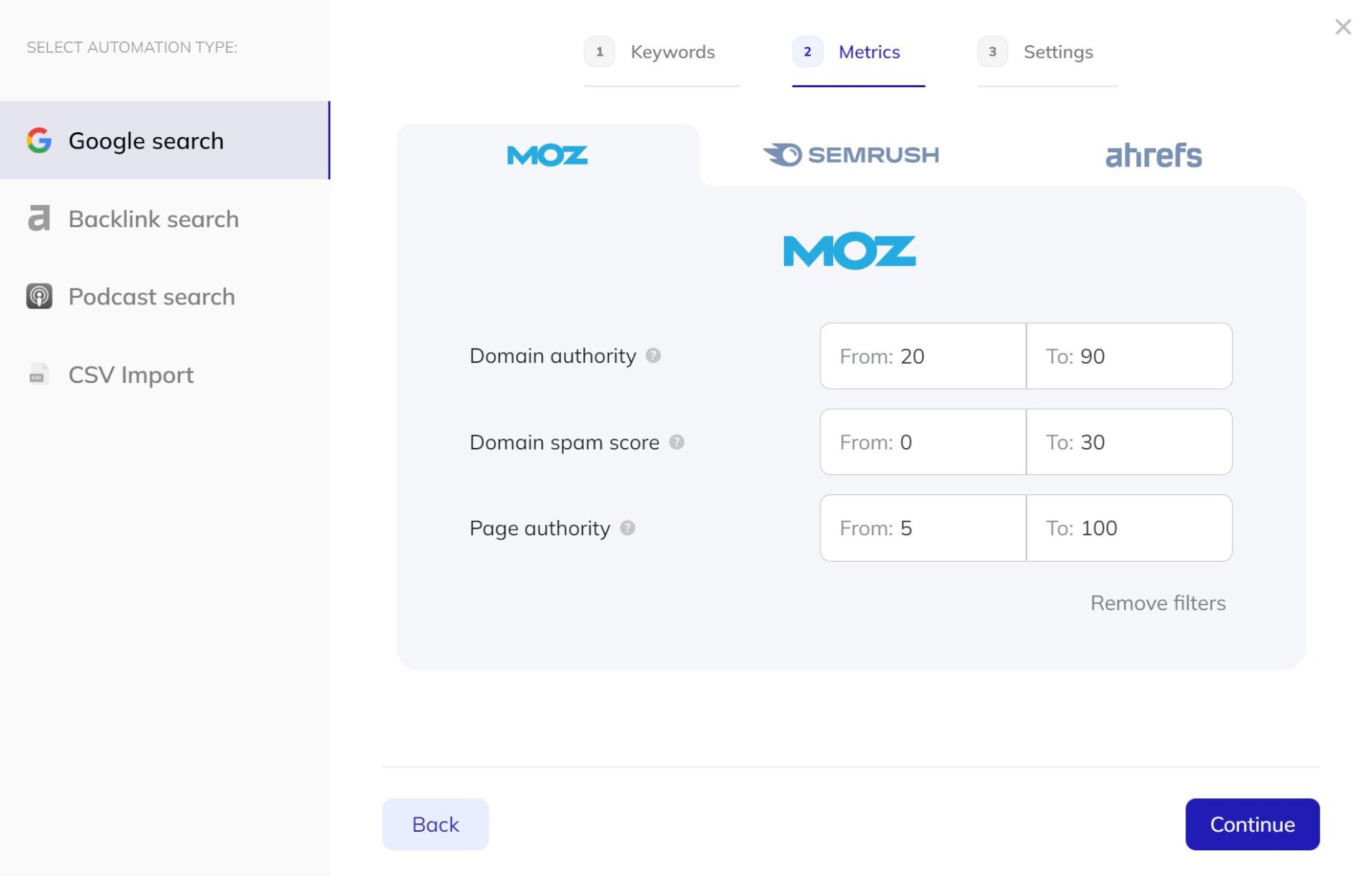
Click “Continue” once again.
Respona’s email finder is already set up to find the most relevant decision-makers like SEO and content managers, but you’re welcome to tweak it for your own preferences.
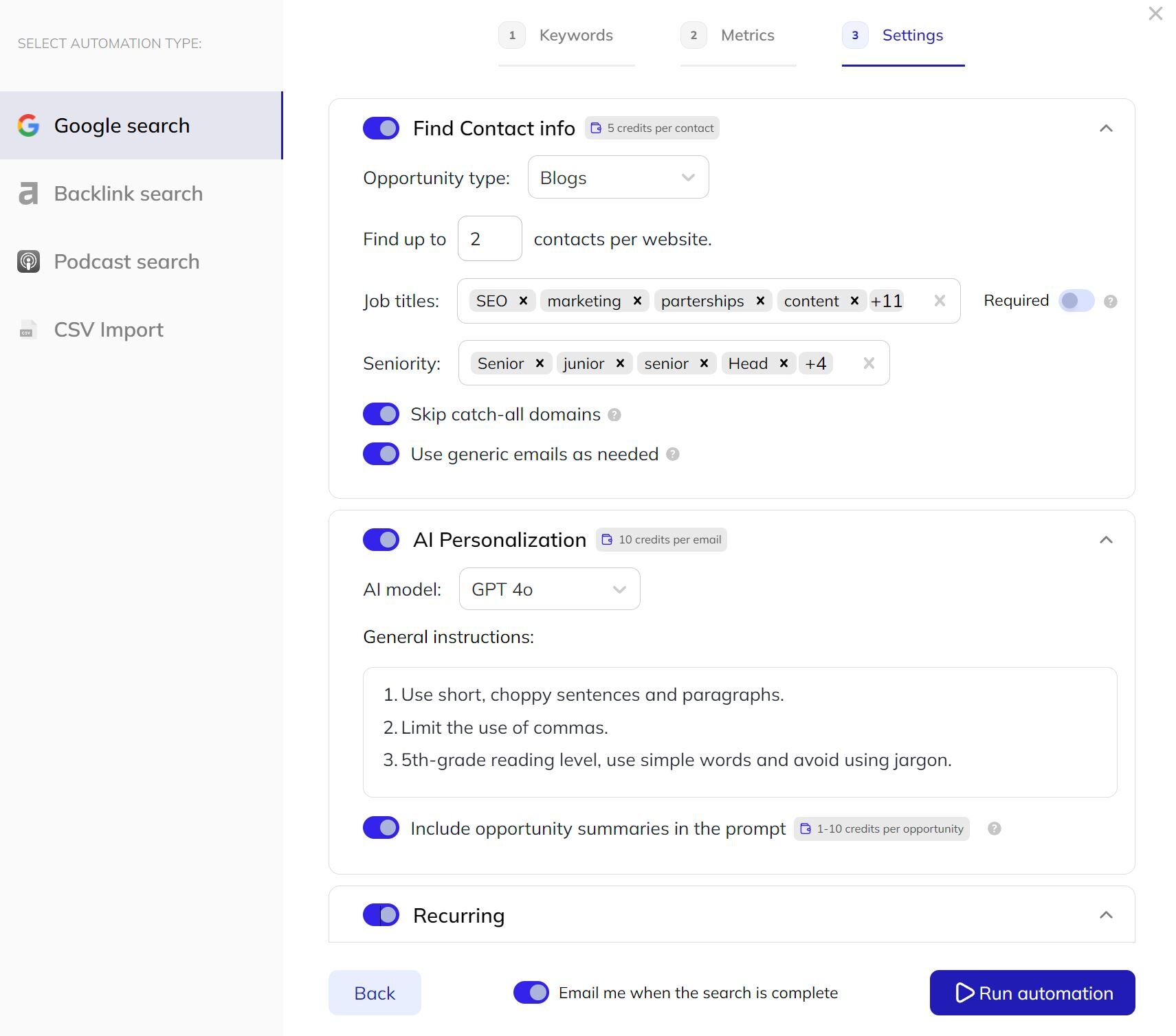
This is also where you can give the AI additional instructions.
In addition to tone and style guidelines, we also recommend feeding it a couple of examples of your manual personalization to train the artificial intelligence.
Let’s also enable the “recurring” toggle at the bottom.
This way, Respona will re-run our search automation every couple of weeks and automtically add new opportunities that may have popped up in the meantime.
Click “run automation” to start looking for link opportunities, their contact information, and personalizing your emails – all in one go.
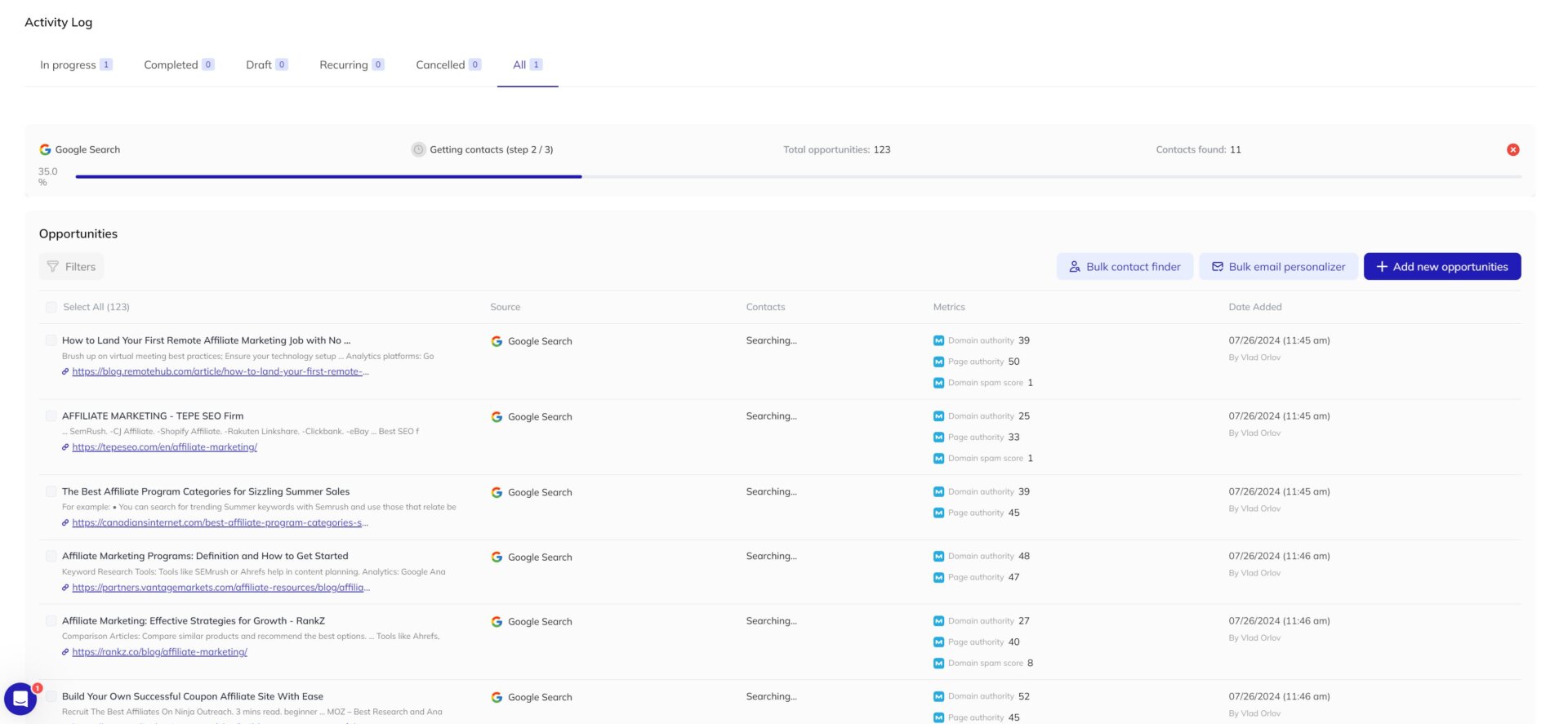
It’s run in the cloud – so while it’s doing its magic, you can switch to another capaign or task.
Once the search is finished, feel free to move on to the next step – Review & Launch.
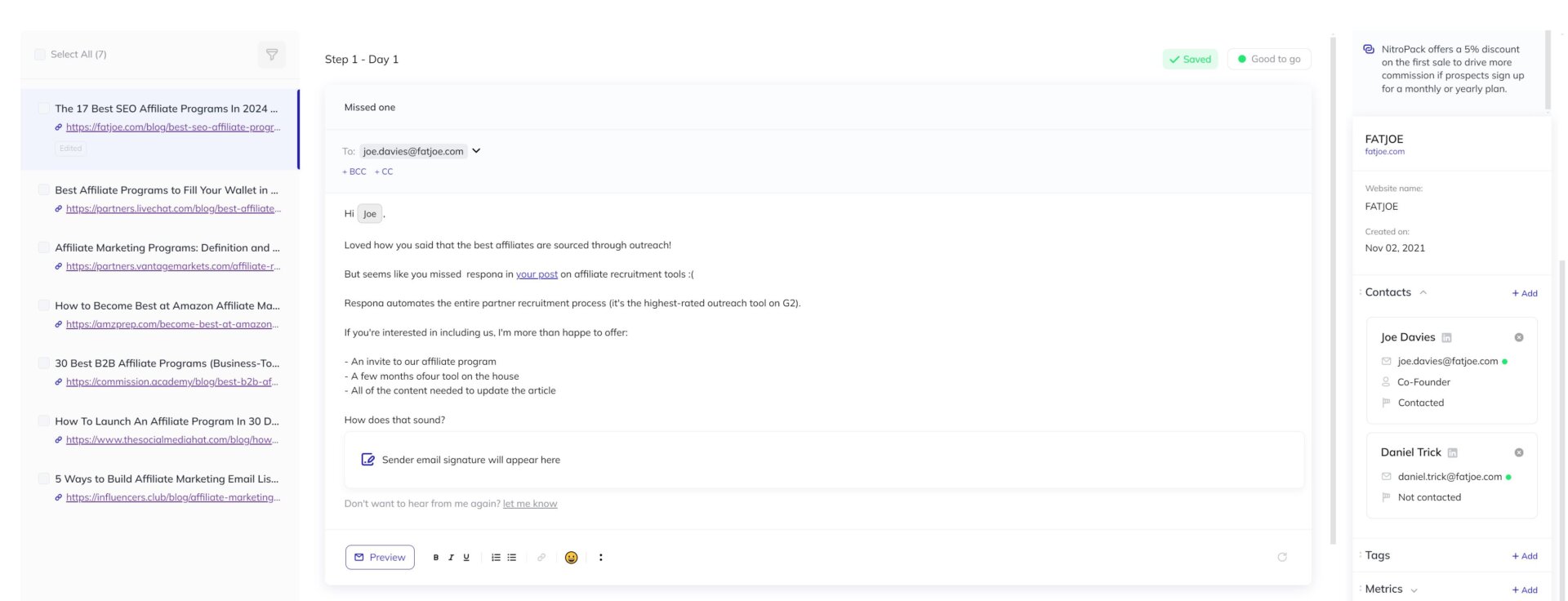
This is where you can review your AI personalizations and make manual edits where necessary.
In addition to email addresses, Respona also finds the LinkedIn accounts of your prospects. You can find them next to the names of your contacts on the left side.
We recommend sending them a connection request to increase your chances of getting a reply.
Before launching the campaign, Respona will also double-check your opportunities to make sure all of the variables are populated and you’re not trying to reach someone who’s on your unsubscribe list or already active in another campaign.
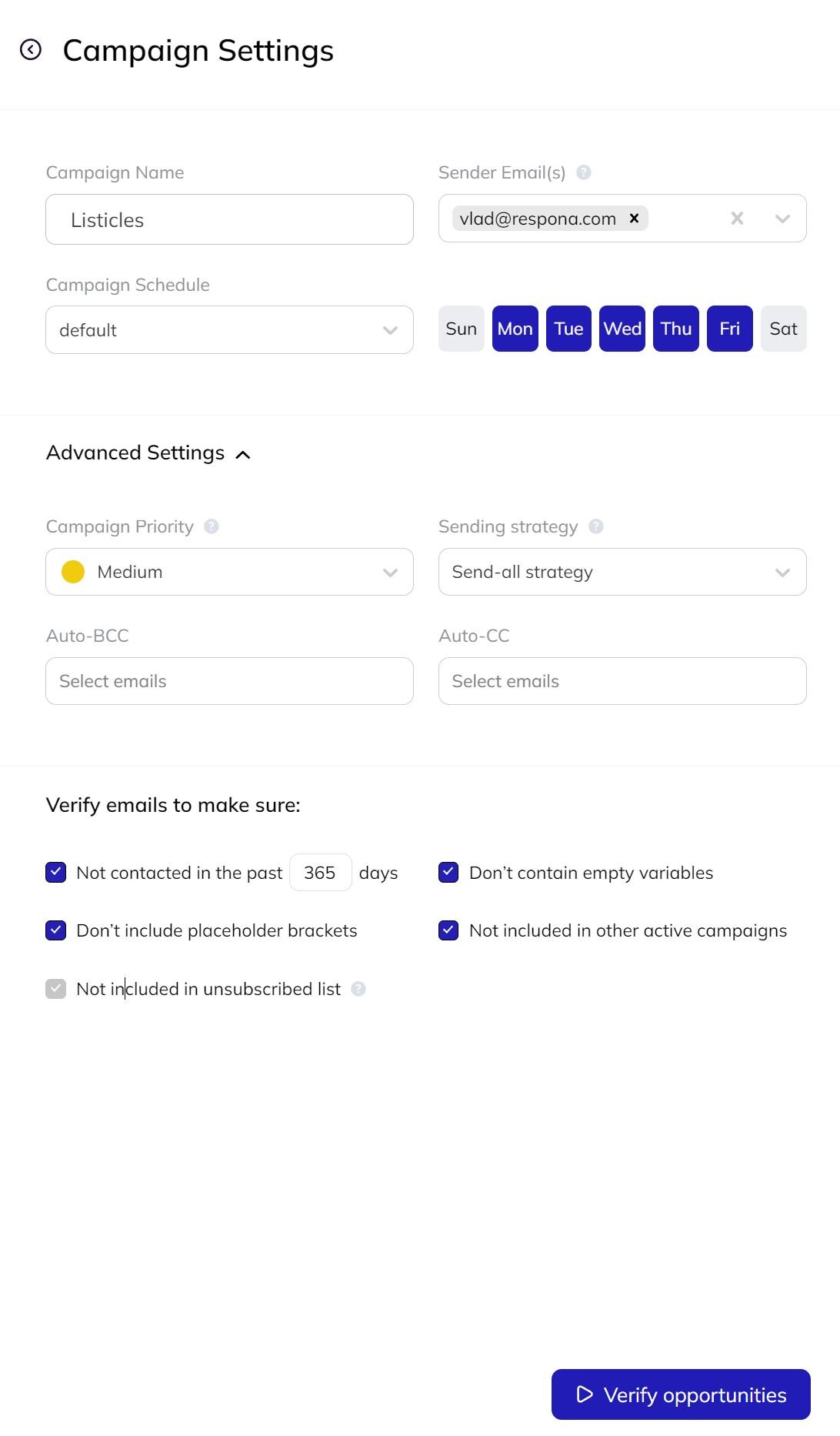
Listicle Outreach Template
Hi John,
It seems like you missed Respona in your post on [target keyword1] :(
Respona automates the entire partner recruitment process in minutes, and is actually the highest-rated outreach tool on G2.
If you’re interested in including us, I’m happy to:
1. Get you six-month access to try it out on the house
2. I’ll provide all the assets you need to update the article (screenshots, custom description, etc).
How does that sound?
Vlad
Product Review Outreach Template
Hi John,
Loved the review you did on Ahrefs. It’s very thorough and well-researched.
I’m wondering if you’re open to writing a review for Respona?
Contrary to Ahrefs, Respona automates the entire partner recruitment process in minutes (it’s the highest-rated outreach tool on G2).
We’ll be offering a free trial of Respona, inviting you to join our affiliate program, and, of course providing all of the assets needed to update the article.
How does that sound?
Vlad
Product Alternatives Outreach Template
Subject: Ahrefs alternatives
Hi John,
It seems like you missed Respona in your list of Ahrefs alternatives :(
Contrary to Ahrefs, Respona automates the entire partner recruitment process in minutes (it’s the highest-rated outreach tool on G2).
We’ll be offering a free trial of Respona, an invitation to join our affiliate network, and, of course providing all of the assets needed to update the article.
How does that sound?
Vlad
Competitor Mentions Outreach Template
Subject: Ahrefs mention
Hi John,
Since you mentioned Ahrefs in your article, thought you’d be interested in checking out Respona.
Contrary to Ahrefs, Respona automates the entire partner recruitment process in minutes (it’s the highest-rated outreach tool on G2).
We’ll be offering a free trial of Respona, inviting you to join our affiliate network, and, of course providing all of the assets needed to update the article.
How does that sound?
Vlad
How to Find Competitors’ Affiliate Links and Programs
The first way of finding affiliates is to find other bloggers that are already participating in affiliate programs.
An affiliate link on someone’s website is a tell-tale sign that they’re an affiliate marketer.
These are easy to spot, especially if you have access to backlink tracking software such as Semrush or Ahrefs.
First, pick a company that you know has an affiliate program.
If you don’t know any, a great place to start is First Promoter – which is an affiliate tracking tool that tons of businesses use for their campaigns.
If you take a peek at First Promoter’s backlinks, you’ll see pretty much all of their users:
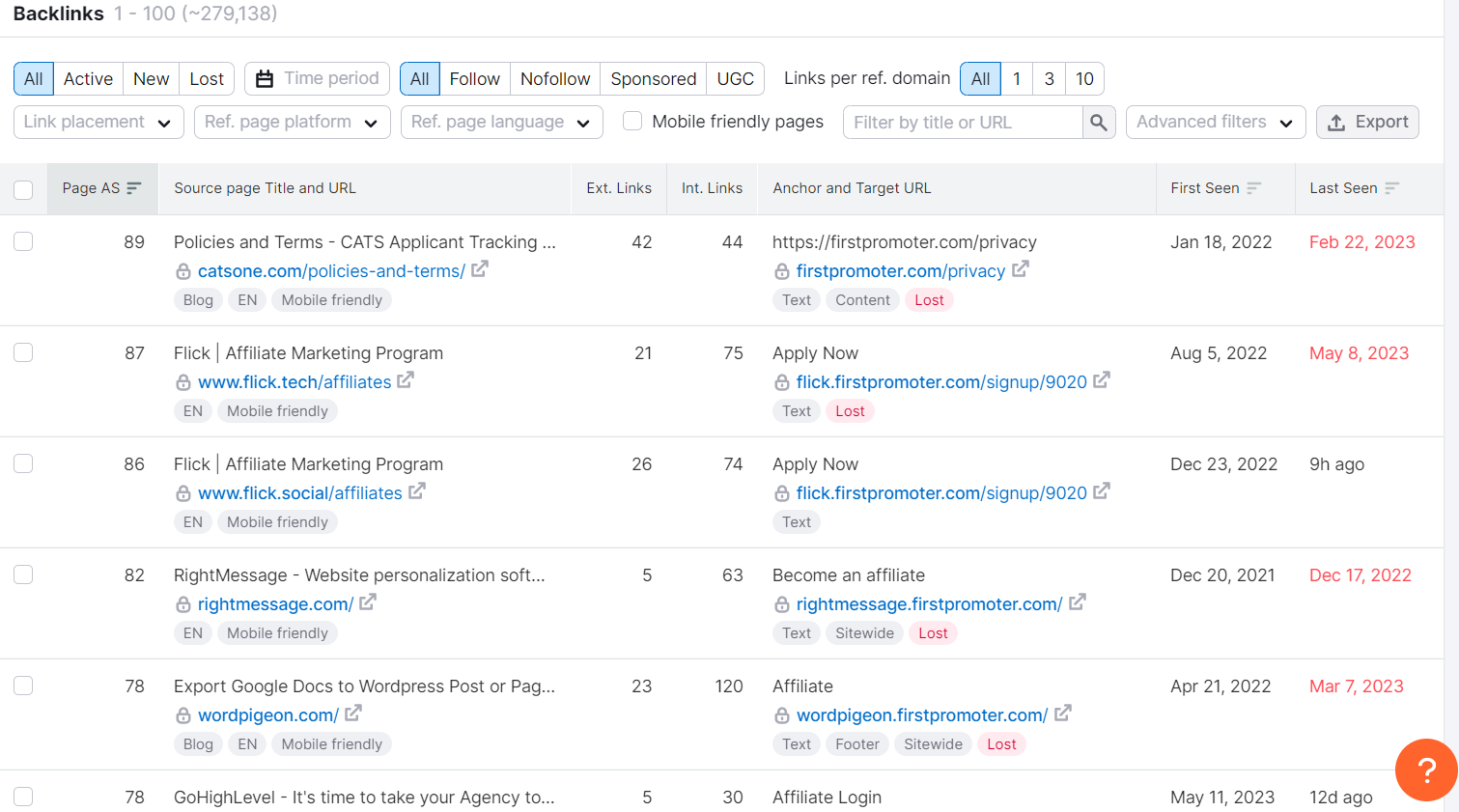
From there on, you can export them and reach out to them directly with a pitch to join your own program.
Or, you can go one step above and go for their affiliates.
Just click on any domain and then go to their Backlink report.
Then, look for links with a potential affiliate tag.
Some of the most common affiliate link tags are:
- Affiliate ID (affid, aff_id, ref)
- Campaign ID (campid, utm_campaign, cid)
- Source (src, utm_source)
- Medium (utm_medium)
- Creative ID (creaid, creative)
- SubID (subid, sid)
For example, Flick seems to use the “?fpr=” tag for their affiliate links:
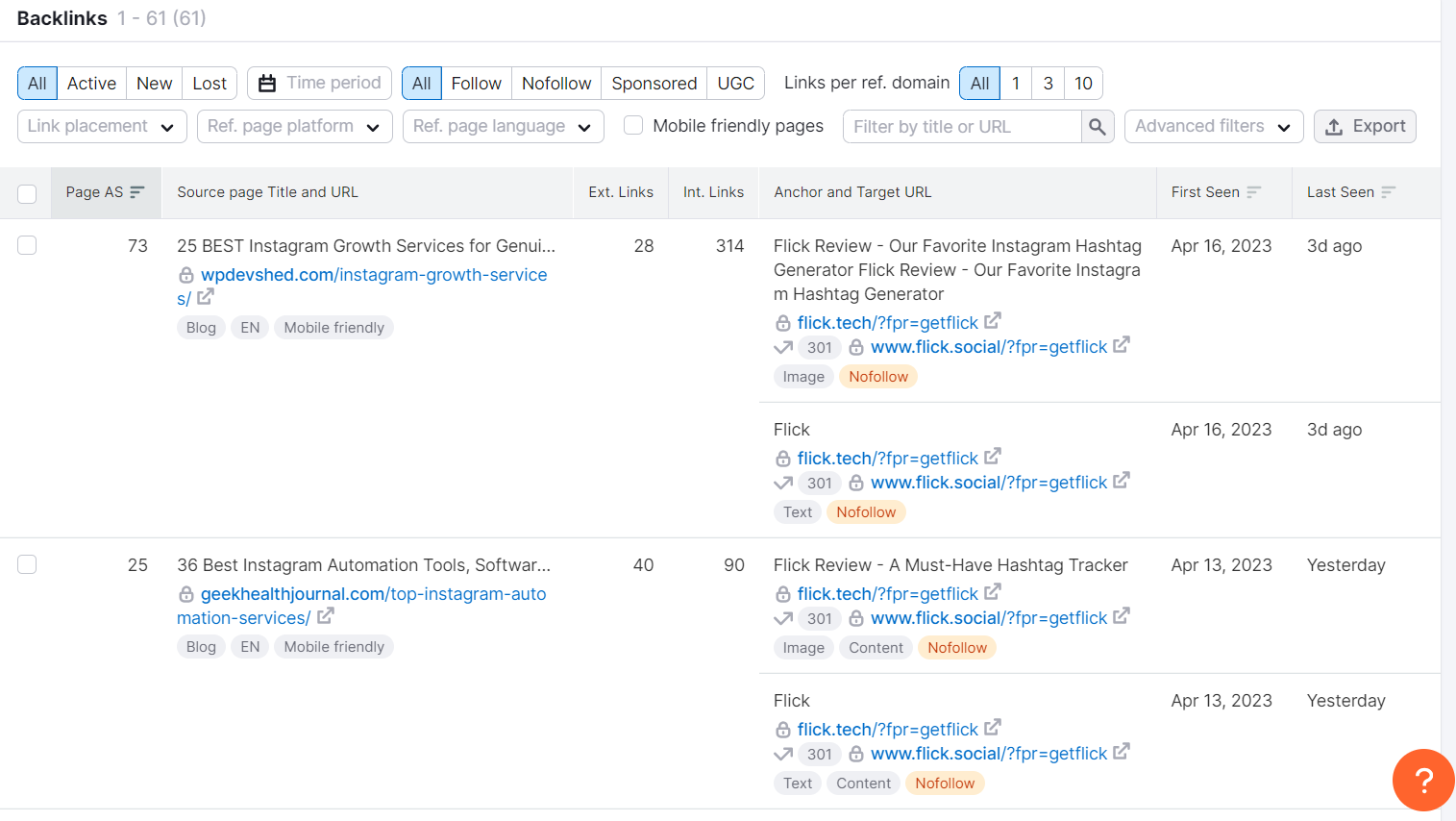
Just scroll through your target website’s backlinks until you notice a pattern, or experiment with filtering by specific affiliate tag.
From there, you can export your target website’s affiliates, and use an outreach tool like Respona to get in touch with them.
Build a Landing Page for Your Program
The downside to actively reaching out to recruit affiliates is that it can take away solid chunks of your days.
A landing page for your affiliate website can partially take that load away, and generate a passive stream of affiliates.
Just take a look at Semrush’s perfect affiliate page – doesn’t $200 for every subscription sale sound compelling?
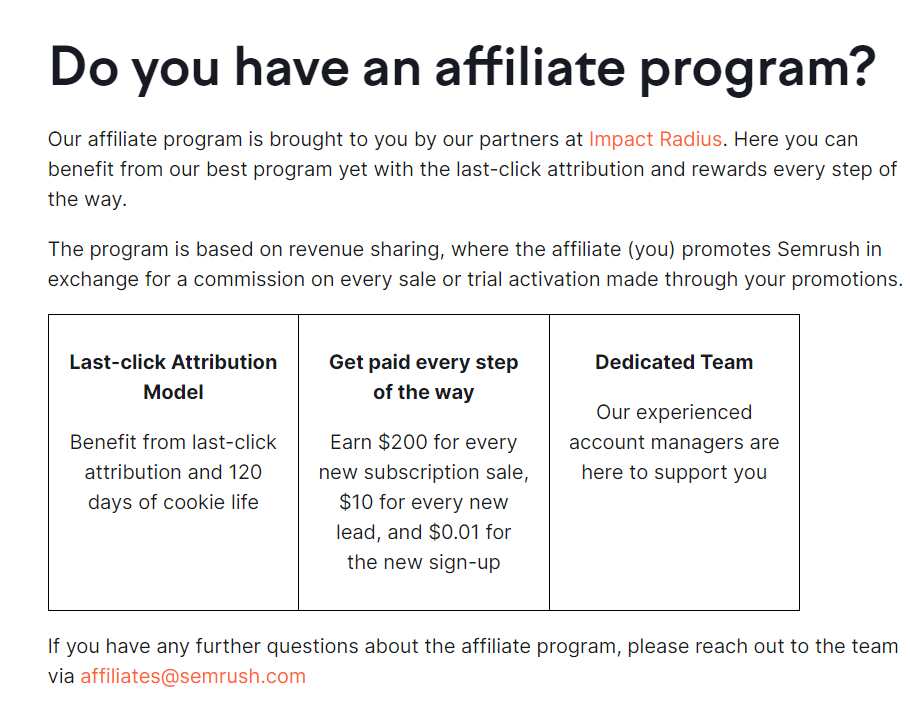
Not sure where to start?
Here are some tips:
- Grab your audience’s attention with a strong, to-the-point headline emphasizing the benefits of joining your affiliate program.
- Use appealing images and graphics to showcase your product or service and create a visually engaging layout.
- Clearly outline the advantages of your affiliate program (e.g., high commission rates, cookie duration, promotional materials, and dedicated support).
- Provide a clear and straightforward explanation of your commission structure and payment terms to avoid confusion.
- Highlight the experiences of your current successful affiliates as social proof and inspire potential partners.
- Make the registration process as simple as possible, with a clear call-to-action (CTA) button that directs visitors to the sign-up form.
- Address common questions and concerns about your affiliate program to help potential partners make informed decisions.
- Offer multiple ways to get in touch (email, phone, or live chat) for potential affiliates who may have further questions or need assistance.
- Ensure that your landing page is optimized for mobile devices.
- Maintain a consistent look and feel with your overall brand to establish trust and build a strong connection with potential affiliates.
Influencers and Social Media Personalities
Influencers live off their audience.
Or, at least, earn a significant portion of their income from it.
They also have the power to influence their followers’ purchasing decisions – making them perfect affiliates with untapped groups of potential customers.
It doesn’t need to be a huge following – anybody with any kind of social media platforms presence can be considered an influencer (a.k.a. micro-influencers).
You can start manually researching your niche and seeing popular Facebook groups, YouTube channels, etc.
For example, one of the biggest influencers in our niche (digital marketing/SEO) is Brian Dean.

Or, you can leverage influencer marketing tools like SparkToro to see which groups and channels your audience likes to spend their time on.
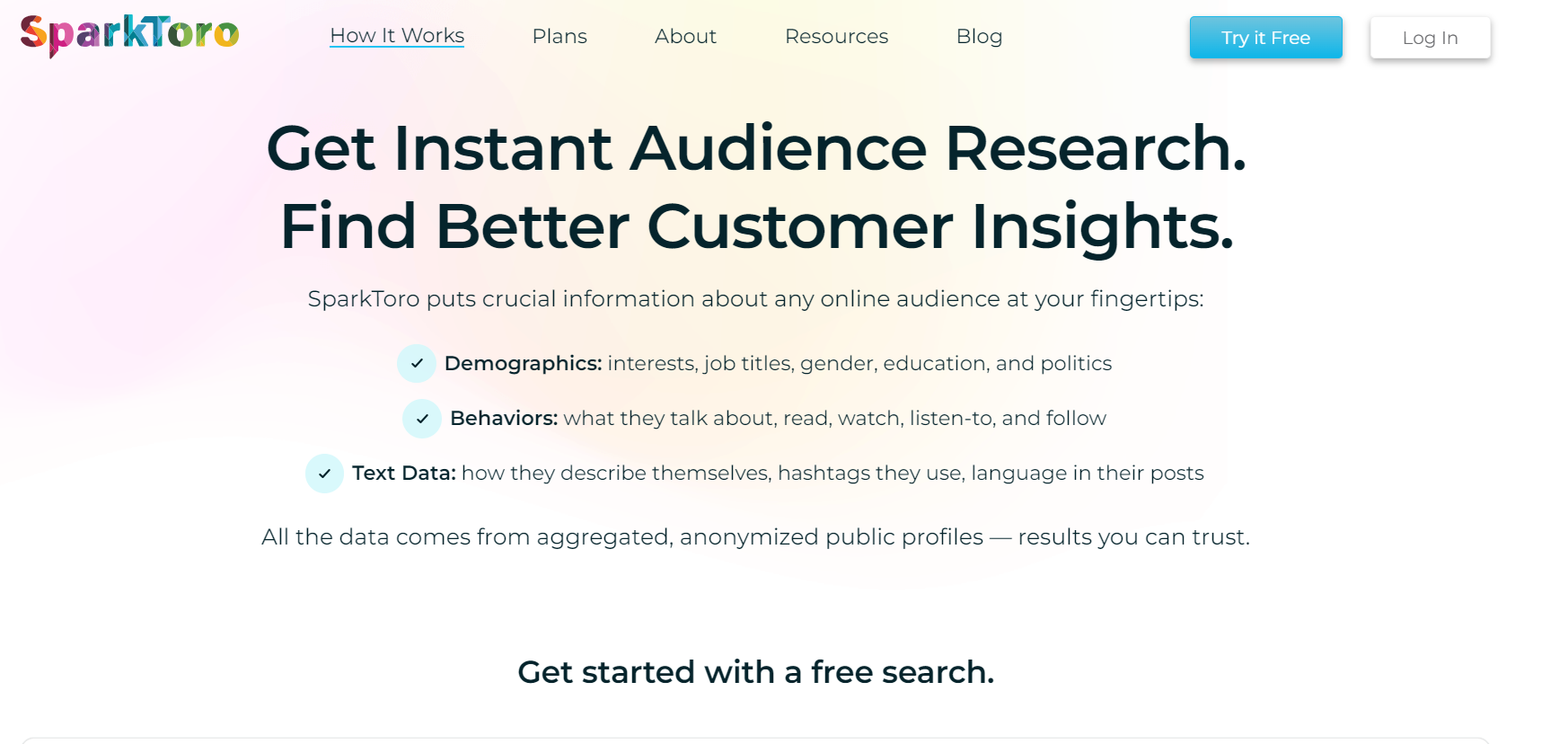
Turn Your Own Customers Into Affiliates
Converting your existing customers into potential affiliate marketers is an ingenious strategy, whether you’re operating in the B2B or B2C realm.
Why, you ask?
Well, to put it simply, happy customers are often your best advocates!
They’ve already experienced the benefits of your product or service firsthand, making them the perfect candidates to spread the word to others.
In a B2B environment, this conversion works wonders, as businesses typically have a network of connections and partners, giving them leverage to make recommendations based on their own positive experiences.

Similarly, in the B2C world, enthusiastic customers can effortlessly influence their friends, family, and followers on social media, often resulting in a domino effect that boosts both your brand’s visibility and credibility.
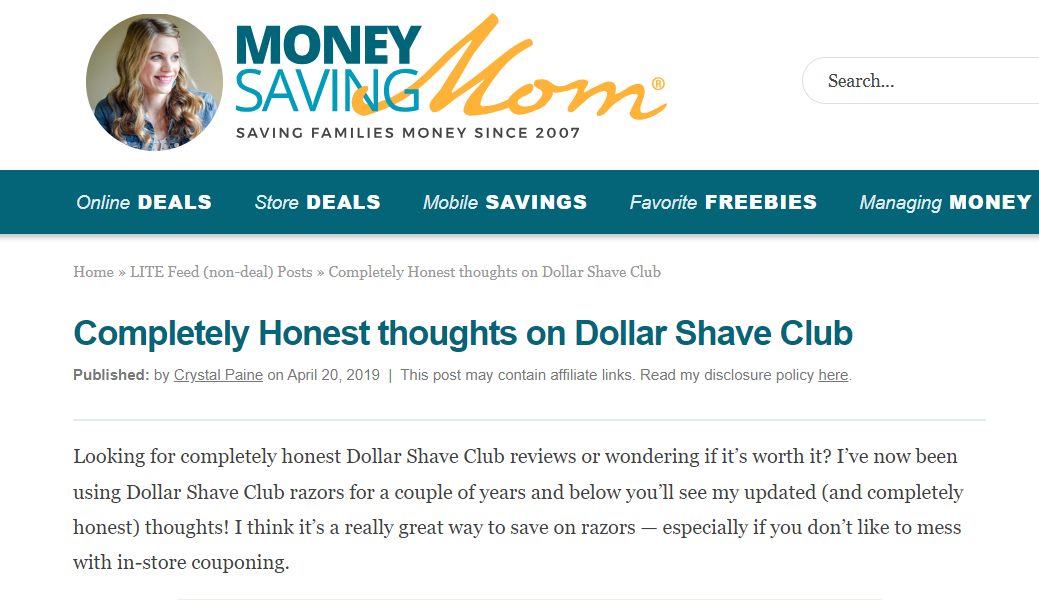
So, how can you transform your satisfied customers into mighty affiliates?
The first step is to create an inviting, easy-to-understand, quality affiliate program tailored to their needs.

After all, they’re already fans, so you want them to feel valued and motivated to promote your brand.
Next, keep the communication lines open.
Provide them with promotional materials, updates on new products or services, and encourage them to share their personal success stories.
This email newsletter by PhantomBuster is a great example – first, they share tips to get the most out of their tool:
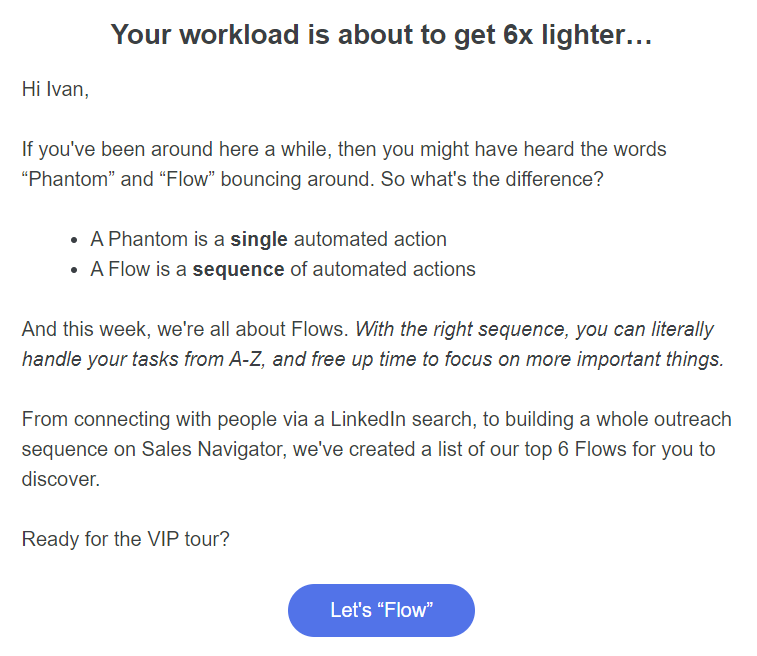
Ask for feedback and feature ideas:
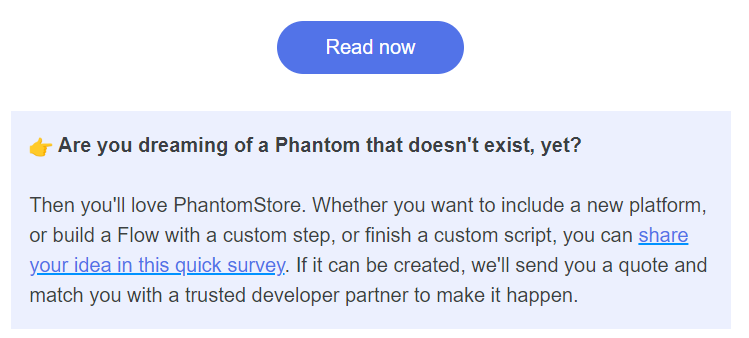
And finally, gently nudge the recipients to join their affiliate program at the end:
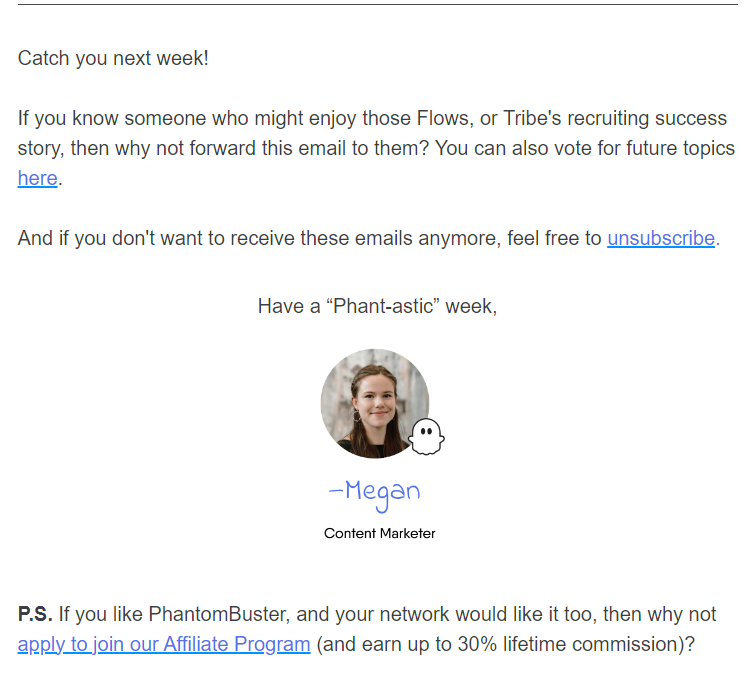
Join Affiliate Networks
Joining an affiliate network is often considered the quickest and easiest way to find new affiliates and for good reason.
These networks act as a digital marketplace, bringing together merchants and affiliates under one umbrella.
Some of the most popular affiliate networks are CJ Affiliate, ShareASale, the Amazon Affiliate Program, and the eBay Partner Network.
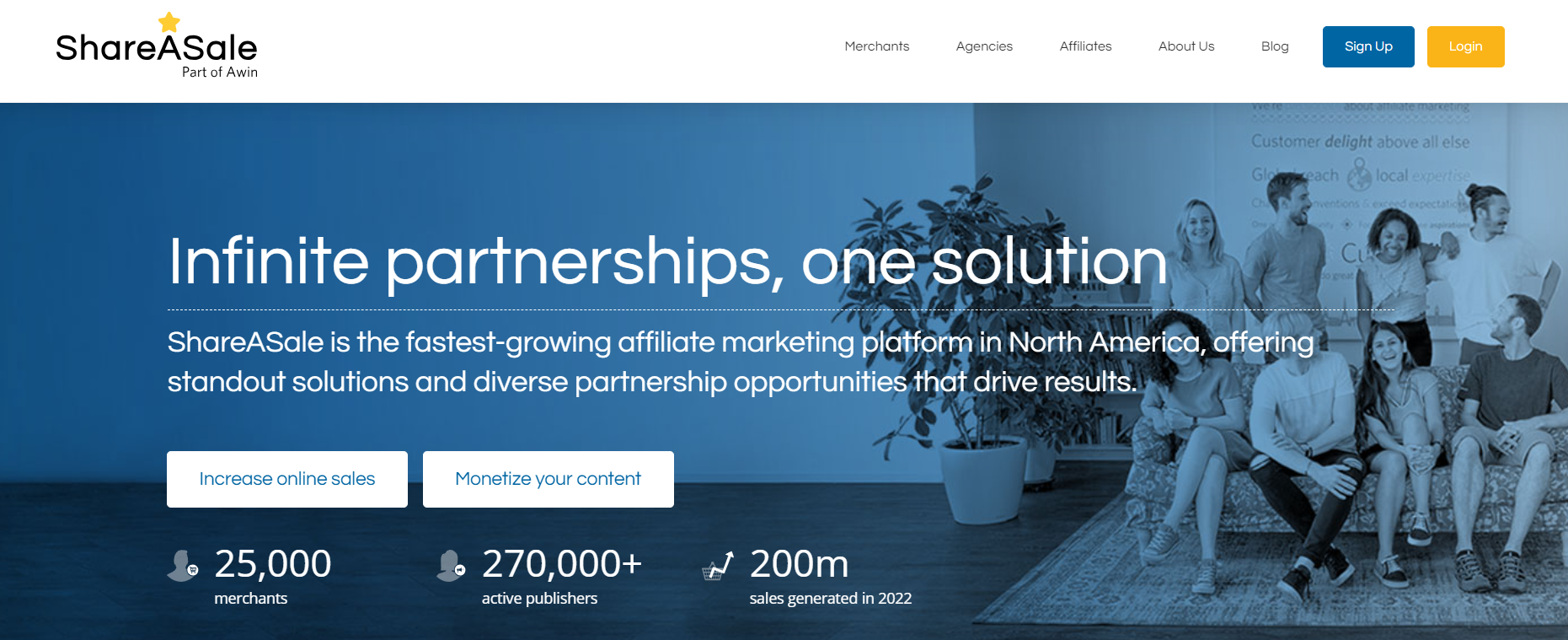
For businesses seeking to increase their reach through affiliate marketing, these networks serve as a one-stop shop to discover and connect with a diverse pool of potential partner affiliates.
One of the main benefits is the sheer convenience of it all.
Instead of scouring the internet and manually reaching out to individual influencers, bloggers, or websites, you gain immediate access to a pre-existing community of affiliates on these platforms.
This saves you time and resources, allowing you to focus on refining your affiliate program and building a strong relationship with your new partners.
Moreover, reputable affiliate networks usually have strict guidelines and vetting processes in place, ensuring that you’re connected with legitimate, quality affiliates who are truly interested in promoting your affiliate product or service.
This reduces the likelihood of partnering with affiliates who may not align with your brand values or target audience.
Keep in mind that affiliate networks also charge a hefty “finder’s fee”, which may make up to 30% of your sale.
Leverage Paid Ads
This tip is for those of you who have the extra budget for promotion.
Cash in on Google Ads for a targeted and widespread reach, or grasp the power of social media advertisements, especially on platforms like Facebook and Instagram, as they provide detailed targeting and retargeting options to quickly grow your affiliate network.
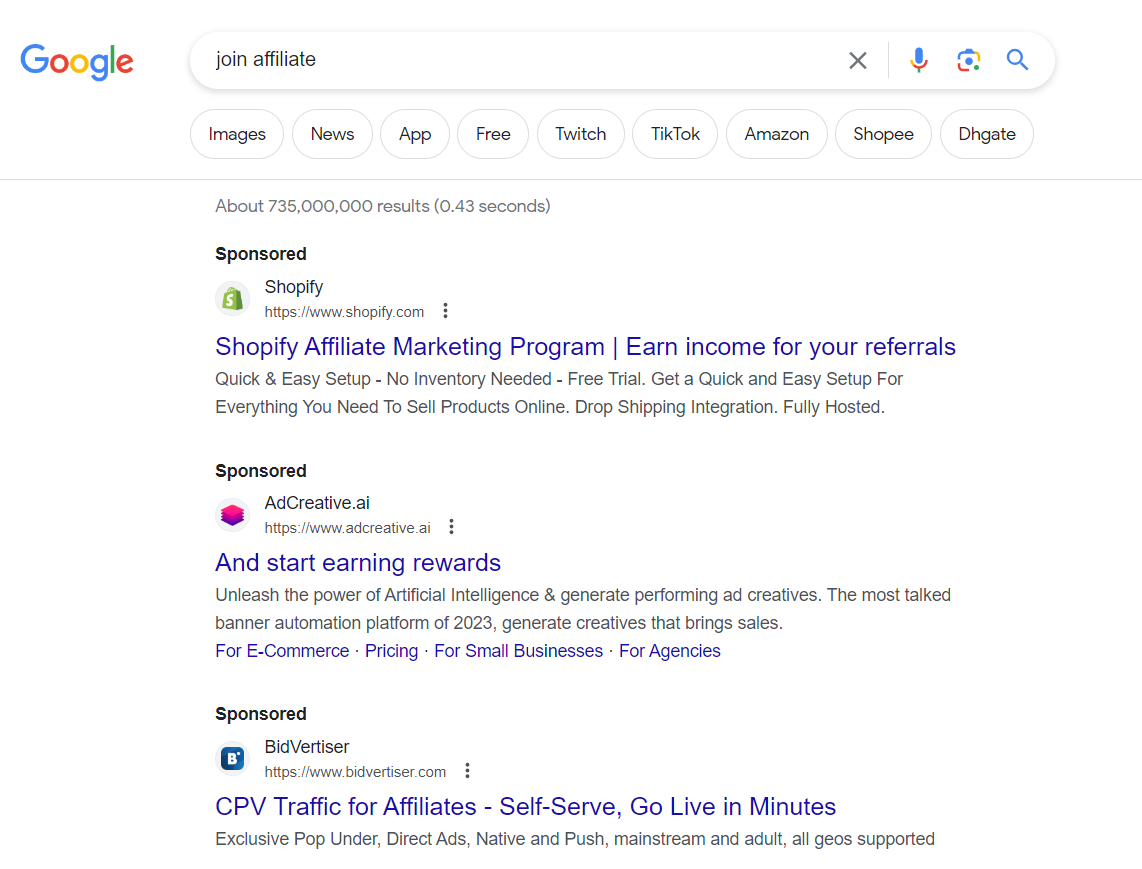
Don’t underestimate LinkedIn Ads either, great for B2B relationships and finding affiliates in professional circles.
Link building cheat sheet
Now Over to You
So, there you have it.
The top seven ways to find relevant affiliates: finding blogs with affiliate links in them, reaching out to your competitors’ affiliates, influencers and content creator groups, joining affiliate networks, and turning your own customers into affiliates or passively attracting new partners with a landing page.
Need help scaling up your affiliate recruitment outreach?
Start your 14-day free trial with Respona to see how we can help.
Frequently Asked Questions (FAQ)
What is an affiliate marketing program and how does it work?
Affiliate marketing programs are performance-based partnerships between businesses and individual affiliates or affiliate networks.
Affiliates promote a company’s product or service through their websites, social media, or other online channels (similar to referral programs) and earn a commission for every affiliate sale or lead generated through their unique referral links.
How can I identify the right affiliate for my business?
To find the ideal affiliate, focus on their niche, audience, and marketing practices. Look for suitable affiliates whose followers align with your target demographic and whose content complements your brand image.
Collaborating with affiliates who are authoritative in their niche and have a strong online presence will boost your reach and credibility.
How can I approach potential affiliates for partnerships?
To approach potential affiliates, start by researching their content and understanding their audience.
You can reach out to them via email addresses or social media, presenting a personalized pitch that showcases your product’s value, great affiliate commission structure, and how the affiliate partnership would benefit both parties.
Remember to be professional, concise, and transparent in your communication.
What kind of commission structures and incentives should I include in my affiliate offer?
Commission structures can be based on a percentage of the sale price, a fixed amount per sale, or a combination of both. You could also reward affiliates for generating leads, sign-ups, or other specific actions.
To make your program more attractive, consider offering performance-based incentives, tiered commissions, bonuses for reaching certain milestones, or exclusive promotions for their audience.
How can I effectively track and measure the success of my affiliate partnerships?
To track and measure the success of your affiliate partnerships, utilize affiliate marketing software or tools that provide detailed reports and analytics.
This will allow you to monitor your affiliates‘ performance metrics, such as clicks, conversions, and earnings in real-time.
Additionally, setting clear goals and KPIs beforehand will help you determine the success of each partnership and make data-driven decisions for optimization.
![How to Find Affiliates in 2024: 7 Sure-Fire Strategies [+Templates]](https://respona.com/wp-content/uploads/how-to-find-affiliates-1024x683.jpg)




![Affiliate Management Guide for 2024 [+ Tools]](https://respona.com/wp-content/uploads/affiliate-management-1024x576.jpg)
